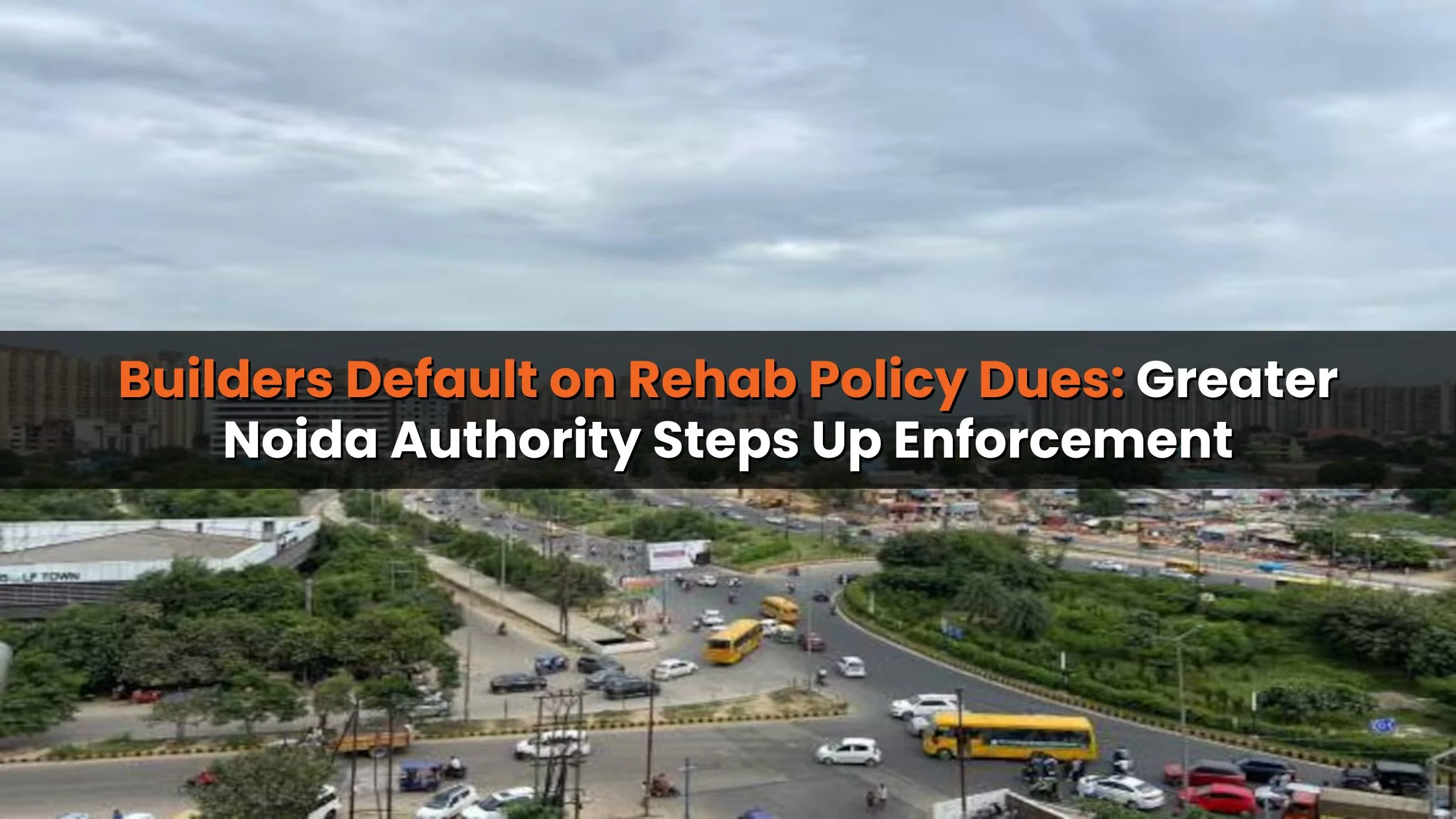Table of Content
- What is Chhattisgarh Circle Rate?
- How Chhattisgarh Circle Rates Work
- Factors Influencing Chhattisgarh Circle Rates
- How to Calculate Chhattisgarh Circle Rate
- Circle Rates in Key Locations of Chhattisgarh
- Circle Rates of Select Locations
- Govt Rate of Land in Bilaspur Chhattisgarh
- Circle Rate of Land Raipur Chhattisgarh
- How to Check Government Rate of Land in Chhattisgarh
- Benefits of Understanding Chhattisgarh Circle Rates
- Impact of Circle Rates on Real Estate in Chhattisgarh
- Conclusion
Circle rates are critical in real estate transactions, serving as the minimum valuation benchmark for property registration. The Chhattisgarh Circle Rate, set by the state government, determines the least value at which land can be sold or registered within government records. Whether you're buying, selling, or investing in property, understanding these rates is crucial for ensuring legality and financial planning.
This article delves into the concept of circle rates in Chhattisgarh, their significance, and how they shape property valuation and urban development.
What is Chhattisgarh Circle Rate?
The Chhattisgarh Circle Rate is the minimum price below which land cannot be sold or registered. These rates are periodically revised by the state government based on factors like development, infrastructure, and market dynamics. Unlike market rates, which fluctuate with demand and supply, circle rates are fixed benchmarks that ensure transparency in property transactions and safeguard against undervaluation during registration.
How Chhattisgarh Circle Rates Work
To purchase or sell land in Chhattisgarh using circle rates, follow these steps:
- Visit the Local Sub-Registrar’s Office: The sub-office registrar of the property’s region provides the circle rate details.
- File an Application: Submit a request for property registration.
- Calculate Stamp Duty and Registration Fees: These are based on the circle rate for the respective area.
- Complete Legal Formalities: Pay the necessary fees and secure legal ownership.
This streamlined process ensures adherence to legal guidelines while preventing disputes over property valuation.
Also Read: Everything You Must Know About Chandigarh Circle Rates
Factors Influencing Chhattisgarh Circle Rates
Several variables impact circle rates across Chhattisgarh:
- Availability of Facilities: Proximity to amenities like schools, hospitals, and marketplaces increases circle rates.
- Market Value: Market rates for a developed area are typically higher than circle rates, reflecting the region’s desirability.
- Type of Land: Commercial properties command higher circle rates than residential or agricultural land.
- Development and Infrastructure: New roads, industrial hubs, and metro projects lead to an upward revision of circle rates, signaling potential growth.
How to Calculate Chhattisgarh Circle Rate
Circle rates are computed using the formula:
Property Value = Carpet Area (in sq. m) × Circle Rate (in ₹/sq. m)
For example, if a 200 sq. m residential property is in a locality with a circle rate of ₹5,000/sq. m, the property's value would be:
200 × 5,000 = ₹10,00,000.
This calculation ensures that buyers and sellers can estimate costs transparently and comply with government regulations.
Circle Rates in Key Locations of Chhattisgarh
Circle rates vary significantly across Chhattisgarh based on the region's development. Below are examples from prominent areas:
Circle Rates of Select Locations
Various locations in Chhattisgarh have different rate circles based on the aforementioned parameters. Let's take a closer look at some of the areas of Chhattisgarh.
|
Area |
Circle Rate (per square metre) |
|
|
Rs. 3,827 - Rs. 11,320 |
|
|
Rs. 1,374 - Rs. 5,600 |
|
|
Rs. 25,000 - Rs. 55,000 |
|
|
Rs. 20,09,000 - Rs. 25,000 |
|
|
Rs. 16,40,000 to Rs. 52,59,000 |
Govt Rate of Land in Bilaspur Chhattisgarh
Different tehsils within Bilaspur will naturally have varied circle rates.
|
Locality |
Price per square feet |
|
1. Rajkishor Nagar |
Rs. 2,270 - Rs. 3,547 |
|
2. Mangla |
Rs. 2,131 - Rs. 3,942 |
|
3. Tifra |
Rs. 2,125 |
|
4. Kapil Nagar |
Rs. 2,210 |
|
5. Tikapara Colony |
Rs. 3,595 - Rs. 3,784 |
|
6. Masanganj |
Rs. 5,294 |
|
7. Talapara |
Rs. 3,142 - Rs. 4,941 |
Circle Rate of Land Raipur Chhattisgarh
Circle rate of land Raipur Chhattisgarh includes a variety of tehsils and rural locations. The Circle Rate in Chhattisgarh also varies, depending on the area.
|
Locality |
Price per square feet |
|
1. Naya Rajpur Marg |
Rs. 4,762 - Rs. 5,600 |
|
2. Sejbahar |
Rs. 2,877 - Rs. 3,160 |
|
3. Bhatagaon |
Rs. 699 - Rs. 28,000 |
|
4. Old Dhamtari Road |
Rs. 2,2250 - 2,371 |
|
5. Kachna Main |
Rs. 2,350 - Rs. 5,107 |
|
6. Kamal Vihar |
Rs. 5,294 |
|
7. Shankar Nagar |
Rs. 2,250 - Rs. 5,618 |
|
8. Devpuri Road |
Rs. 2,360 - Rs. 2,650 |
|
9. Hirapur Colony |
Rs. 2,383 - Rs. 3,846 |
|
10. Changorabhata |
Rs. 2,305 - Rs. 4,115 |
|
11. Pacheda |
Rs. 2,475 |
|
12. Ring Road No. 1 |
Rs. 2,597 - Rs. 2,601 |
|
13. Amlidih Main Road |
Rs. 2,650 - 2,800 |
|
14. Labhandi |
Rs. 2,338 - Rs. 3,733 |
|
15. Shankar Nagar Road |
Rs. 2,250 - Rs. 3,063 |
|
16. Kushalpur Road |
Rs. 3,457 |
|
17. New Rajendra Nagar |
Rs. 2,454 - Rs. 8,500 |
|
18. Tatibandh Road |
Rs. 2,915 |
|
19. Telibandha |
Rs. 2,435 - Rs. 3,442 |
|
20. Vidhan Sabha Road |
Rs. 2,250 - Rs. 2,819 |
These figures highlight the disparity in rates based on locality, with urban and commercial hubs commanding higher values.
How to Check Government Rate of Land in Chhattisgarh
To find the latest Chhattisgarh Circle Rate, follow these steps:
- Visit the official website Kabirdham Portal.
- Navigate to the “Documents” section and select “Circle Rate.”
- Download the relevant PDF for the area of interest.
This user-friendly portal simplifies the process of accessing accurate land valuation details.
Benefits of Understanding Chhattisgarh Circle Rates
Knowledge of circle rates provides multiple advantages:
- Financial Planning: Accurately budget for stamp duties and property expenses.
- Transparency: Ensure compliance with legal standards.
- Investment Insights: Identify potential growth areas based on circle rate trends.
- Avoid Legal Issues: Prevent discrepancies in property registration and valuation.
Also Read: Bihar Circle Rate: A Comprehensive Guide to Property Valuation in Bihar
Impact of Circle Rates on Real Estate in Chhattisgarh
The periodic revision of circle rates reflects government priorities and drives real estate trends. For example:
- Revenue Generation: Higher circle rates lead to increased stamp duty collection, boosting state revenue.
- Urban Development: Revised rates often correlate with planned infrastructure projects, signaling future growth corridors.
- Market Confidence: Transparent rates foster trust among investors and encourage sustainable development.
Conclusion
The Chhattisgarh Circle Rate is a cornerstone of the state’s real estate ecosystem. By providing a transparent framework for property valuation, these rates ensure fairness and legal compliance in transactions. Whether you’re a buyer, seller, or investor, staying informed about circle rates is essential for making sound financial decisions.
With regular updates and accessible tools like the Kabirdham portal, navigating the real estate market in Chhattisgarh has never been easier. Equip yourself with the latest circle rate knowledge to seize growth opportunities and secure your investments wisely.
Follow AquireAcers Whatsapp Channel to Stay Updated With The Latest Real Estate News







Ans 1. The Chhattisgarh Circle Rate is the minimum valuation set by the government for property transactions, ensuring transparency and legal compliance. It serves as the baseline for property registration and stamp duty calculations.
Ans 2. Circle rates are periodically revised by the state government, taking into account factors like infrastructure development, market trends, and regional growth.
Ans 3. You can check the latest circle rates on the official Kabirdham portal under the “Documents” section. Download the relevant PDFs for specific locations.
Ans 4. Key factors include proximity to amenities like schools and hospitals, infrastructure development, land type (residential, commercial, or agricultural), and regional market trends.
Ans 5. Use the formula: Property Value = Carpet Area (in sq. m) × Circle Rate (in ₹/sq. m) For instance, a 200 sq. m property with a circle rate of ₹5,000/sq. m would be valued at ₹10,00,000.
Ans 6. Circle rates are government-set minimum values, whereas market rates reflect the price determined by demand and supply dynamics in the real estate market.
Ans 7. Stamp duty and registration fees are calculated based on the circle rate or the transaction value, whichever is higher, ensuring government revenue aligns with property valuation.
Ans 8. Selling property below the circle rate is not allowed and may lead to legal complications or penalties as it violates government regulations.
Ans 9. Yes, circle rates can vary significantly within a city or district depending on factors like location, development level, and land use.
Ans 10. For buyers, it helps in budgeting and ensuring legal compliance. Sellers can accurately price their properties and avoid legal issues. Investors can identify growth areas and make informed decisions.